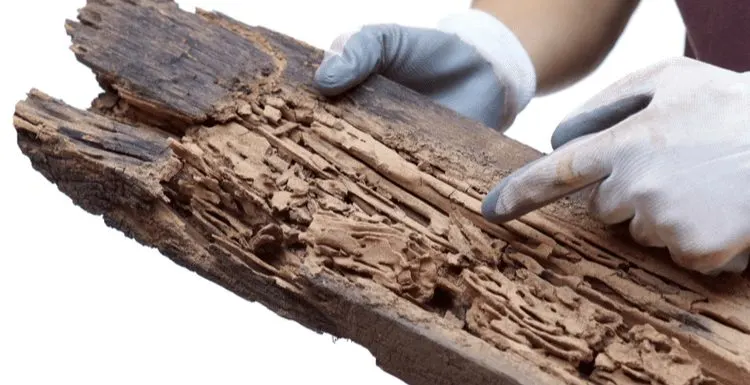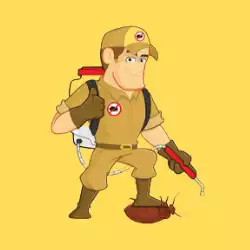Termite inspections should be incorporated into every home purchase, especially in the Midwest.
But what does this cost, and what can you expect? Don’t worry, we’ll have answers to these questions in our complete guide below.
We partnered with Networx to help you find local pest control techs. Click to below to get a FREE quote.
What Is a Termite Inspection?
Think termite inspections are an optional part of home maintenance or selling a home?
Think again. These pests are some of the most prolific nuisances a homeowner or real estate investor can encounter.
Termites live in huge colonies and can lay more than 40,000 eggs each day. They don’t sleep.
They continuously eat wood and build their massive colonies, inflicting over 5 billion dollars of property damage annually in the United States alone.
Termite inspections are an essential part of selling a home. They are also the only way to prevent your property from falling prey to these destructive pests, but not all termite inspections are equal.
Finding the right pest control specialist or company is key to ensuring your property is free from termites and other damaging pests.
We’ll outline the steps a proper termite inspection should follow and how you can ensure your inspection covers all the bases.
Your property was a significant financial investment; it’s worth protecting by making termite inspections part of your home maintenance schedule.
Termite Species in the United States
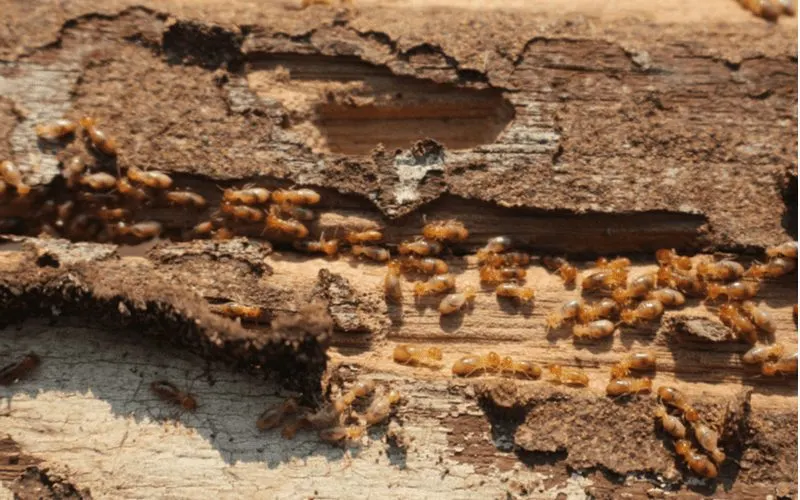
Plew Koonyosying/Shutterstoc
There are several species of termites found in the United States. There are about 45 species, and all fall under one of the three following termite types:
Subterranean Termites
Extremely common in the U.S. and responsible for most termite damage. These termites live underground in the soil.
They are known for building some of the largest nests among insects. The nests are linked to nearby food sources with mud tubes.
Drywood Termites
Drywood termites have smaller colonies than subterranean termites. Still, they can cause lots of damage.
These termites live in wood instead of soil. The damage they cause takes longer to happen and may not be apparent right away without a professional inspection.
Dampwood Termites
Dampwood termites need lots of moisture. For this reason, they are usually found in wood that touches soil or retains a lot of water.
Dampwood termites are not commonly found in homes.
The type of termite found will determine which type and method of treatment will be required to eradicate them.
The Termite Inspection Process
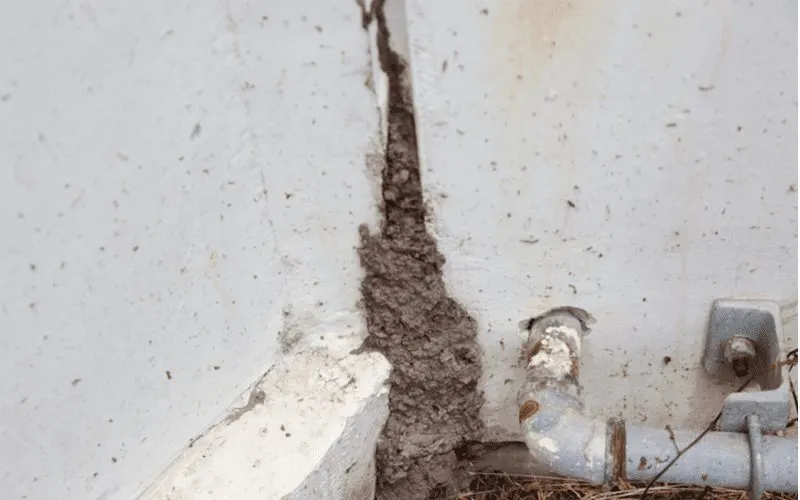
BlackstarRedbuff/Shutterstock
Whether you need the inspection because you’re selling your home and need a Wood Destroying Insect Report or just want to find out if your home may have termites, every termite inspection starts the same way.
Your pest control specialist inspects the exterior and interior of your home to look for telltale signs of termite colonies.
Next, they’ll use specialized equipment to find exactly where termites are colonizing (if you do, in fact, have a termite problem) and discover which termite species you’re dealing with.
Using this information, they will evaluate your home and the severity of the infestation. The evaluation will enable them to create the best treatment plan, depending on the type of termites found and their location.
Termite inspections are vital to keeping your home termite-free for the long term. Let’s look at each step of the inspection process so you’ll know what to expect.
1. Check for Signs of Termite Infestation
After you schedule an inspection, termite inspectors from pest control services will look around and inside the property. They are looking for:
- Possible points of entry
- Weakened wood structures in and around your home, including crawlspaces
- Piles of wings, which termites shed after swarming
- Termite-possible tree stumps
- Visible termite nests and “mud tubes,” or small tubular structures that connect termite nests to their favorite food source
- Signs of hollowness in walls, baseboards, and framing
- Abnormal amounts of moisture in the walls and framing can indicate a termite problem
This part of the inspection requires a few special tools and pieces of equipment.
Termite Inspection Tools and Equipment
There are a few pieces of equipment that are used during a termite inspection.
- Sounding Tools: Tapped on wood in and around the home, these tools detect hollowness and indicate whether termites or wood decay is present
- Thermal Imaging Cameras help detect temperature changes, even behind walls, under floors, etc.
- Moisture Meter: This Can indicate the presence or likelihood of termite presence due to wood decay
- Endoscope: A small camera on a flexible arm that helps technicians see behind walls and into tiny areas to look for termites
If termites are found or suspected from this initial inspection, your pest control specialist will use a mix of low- and high-tech equipment to find out more detailed information on where the colonies are.
This is how they will begin to determine the best method to get the treatment.
2. Deliver a Termite Infestation Evaluation
Most pest control companies will provide you with some sort of evaluation after the initial inspection. It may not be on the same day as your initial inspection.
Some companies will come back within a day or two to share the evaluation and resulting treatment plan with you.
In this evaluation, you can expect to see information like:
- A diagram of your home and/or property with termite colony and treatment locations marked
- Estimated repairs and corrections that should be made due to termite damage
- Thermal imaging indicating areas of high levels of moisture or termite presence
- Description of the termite species found
- A complete treatment plan to eradicate the termites
- A cost estimate for the treatment plan
The evaluation will help the technician determine which tools, chemicals, and equipment to use in the treatment plan.
3. Create a Termite Treatment Plan
Once your pest control technician has inspected and evaluated your home for termites, they will create a termite treatment plan to deal with the problem.
They will share this treatment plan with you to get your approval. You may need to schedule the actual treatment for another day, depending on how busy your pest control company is.
They may use chemicals, non-repellent treatments, or fumigation (termite tenting) to kill the termites and keep them from coming back.
Subterranean Termite Treatment
- Liquid termiticide applied to the soil under the home, any affected areas, and the foundation using a small sprayer with low pressure
- Foam termiticide injected into or behind the walls using a small drill bit; the foam expands and seeps into every part of the structure, including the studs
Drywood Termite Treatment
- Fumigation (tenting) to treat the entire home or localized injections of termiticide into the affected areas
If the treatment plan involves fumigation, you will need to make arrangements to stay with friends, family, or in a hotel for 4 days to one week.
The toxic chemicals and resulting fumes are hazardous for humans, pets, and plants. After several days, the fumes will clear, and you will be able to return home.
Termite Treatment Chemicals
Most pest control technicians will use tools, chemicals, and equipment like the following to inspect and treat a home for termites:
- Liquid or Foam termiticide (Bifenthrin, Permethrin, Fipronil, Chlorantraniliprole, Sodium Borate or Imidichloprid)
- Fumigation Chemicals (sulfuryl fluoride)
The method used for treatment will depend on the severity of the problem and the type of termite in question. We’ve listed the most common methods of treatment for every kind of termite below.
4. Develop a Long-Term Termite Control Plan
Long-term termite protection doesn’t end with one inspection and treatment.
To stay termite-free, you will need to commit to at least an annual termite inspection to make sure they haven’t returned or recolonized somewhere else on your property.
Slow-release termite bait stations may be part of your long-term pest control plan. These stations attract any termites that arrive after treatment and kill them to prevent new colonies from forming in treated areas.
Cost of Termite Inspections
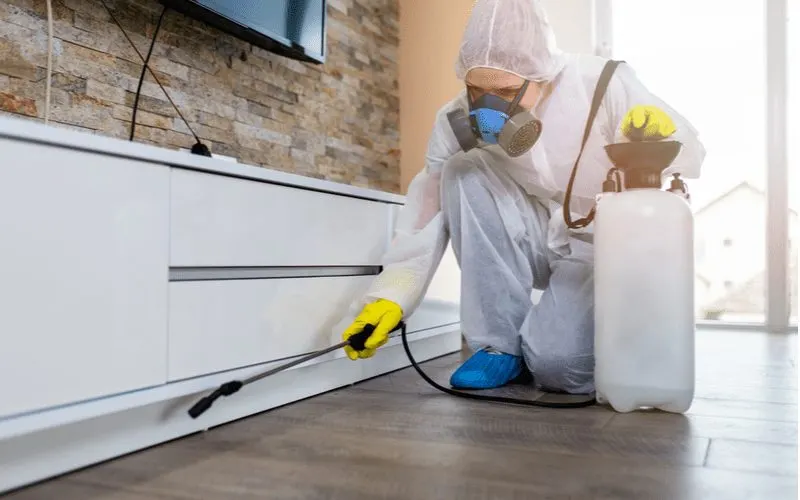
Hedgehog94/Shutterstock
You may be asking, “What does a termite inspection cost?” Before you panic, we can reassure you that the cost is not as steep as you might think.
Termite Inspections
Real estate closing inspections cost $65 to $100. That cost includes a wood-destroying insect report.
The average termite inspection, if not offered free as a promotion, costs around $65–$100, depending on the area you live in and the size of your home.
Real estate closing inspections are not offered for free because a 2-part Wood Destroying Insect Report must be generated.
Some pest control companies offer specials where the initial inspection (or at least a shorter consultation) is free. Treatment, however, will be an additional cost.
Termite Treatment
Termite treatments vary in cost depending on the area you live in, the size of the area to be treated, and the type of chemical treatment used. Here are some cost averages for different types of termite treatments:
- Localized treatments: $120 to $150
- Full fumigation: $1,000 up to $4,000, depending on home size
Finding a Pest Control Company
Before you commit to working with a pest control company, it’s wise to do your research and ask a few important questions that can help you determine what kind of inspection process they use.
It’s a great way to find out if it’s a company you’ll be comfortable working with long-term since these inspections need to be completed every year or two.
- Do they offer a free termite inspection or give a free quote for termite inspections?
- How long have they been in business?
- What kind of reviews do they have online?
- What kind of equipment and tools do they use in the inspection process?
- Do they offer specials or bundle other inspection services (carpenter ants, bed bugs, etc.)?
- How often do they recommend termite inspections be done?
- Do they offer any guarantees?
- How do they handle billing, and is there a contract?
We partnered with Networx to help you find local pest control techs. Click to below to get a FREE quote.
Should You Get a Termite Inspection?
Scheduling a termite inspection is an essential part of protecting your most valuable investment, whether you are selling a home or purchasing one.
The incredible damage termites can do to a wooden structure in relatively little time makes it necessary to have a professional inspect and evaluate your home.
After all, their trained eye quickly picks up on signs of damage before it becomes an expensive problem. Once you’ve found a reputable, trustworthy pest control company near you, schedule your consultation or inspection.
With the information we’ve outlined here, you’ll know exactly what to expect during the inspection process and afterward.
If you discover that you do have a termite problem, rest assured that there are a multitude of treatment options and ways to ensure your property stays termite-free after the treatment.

